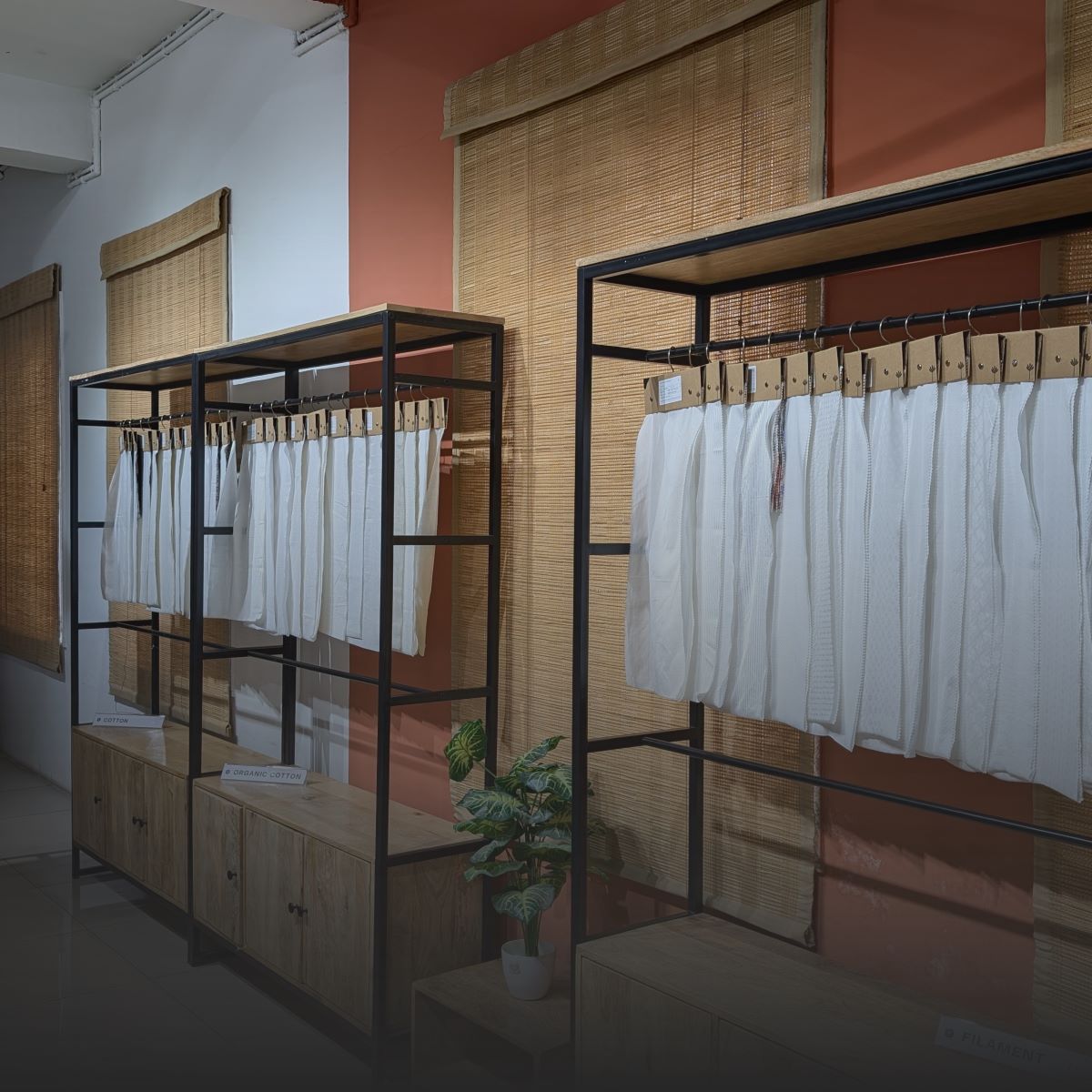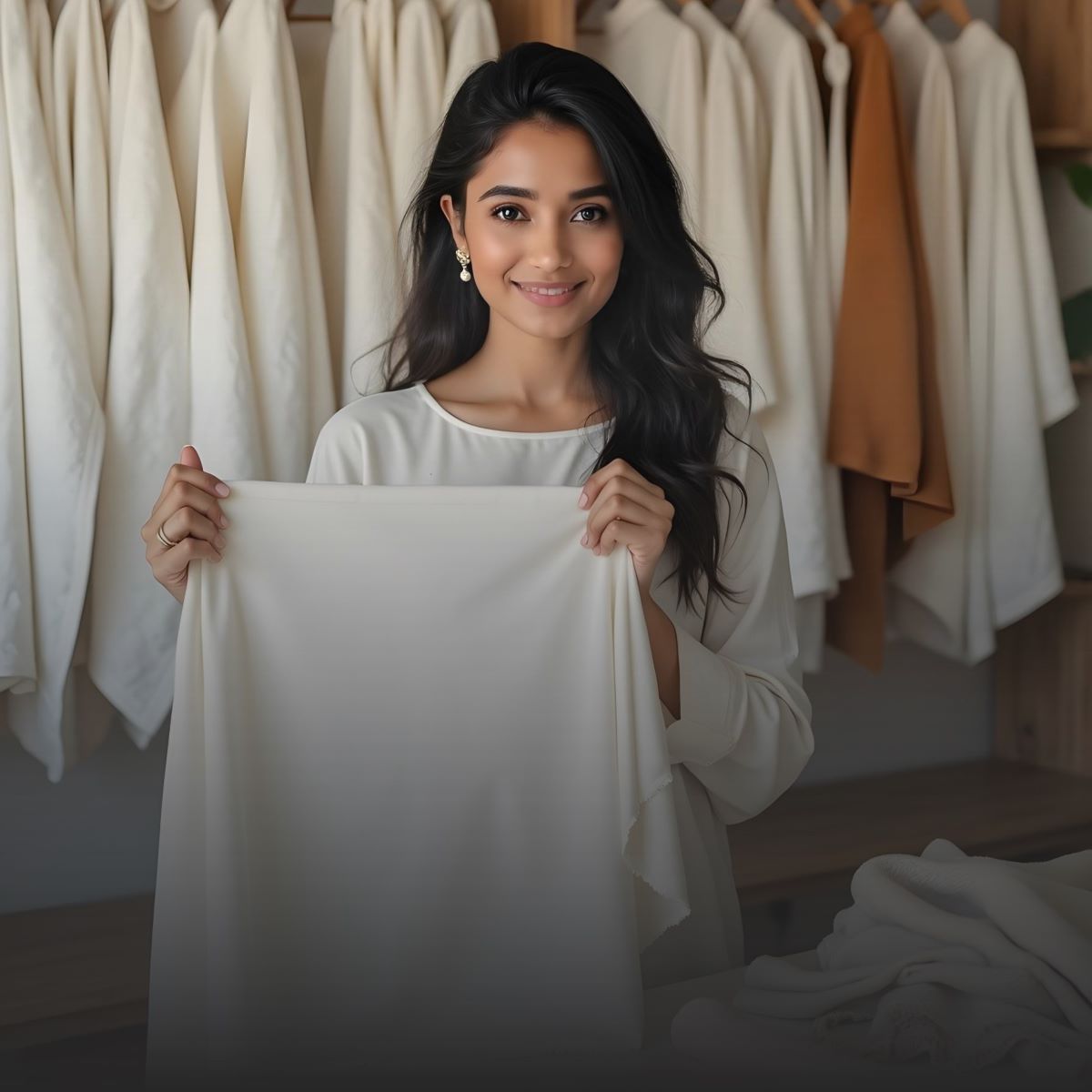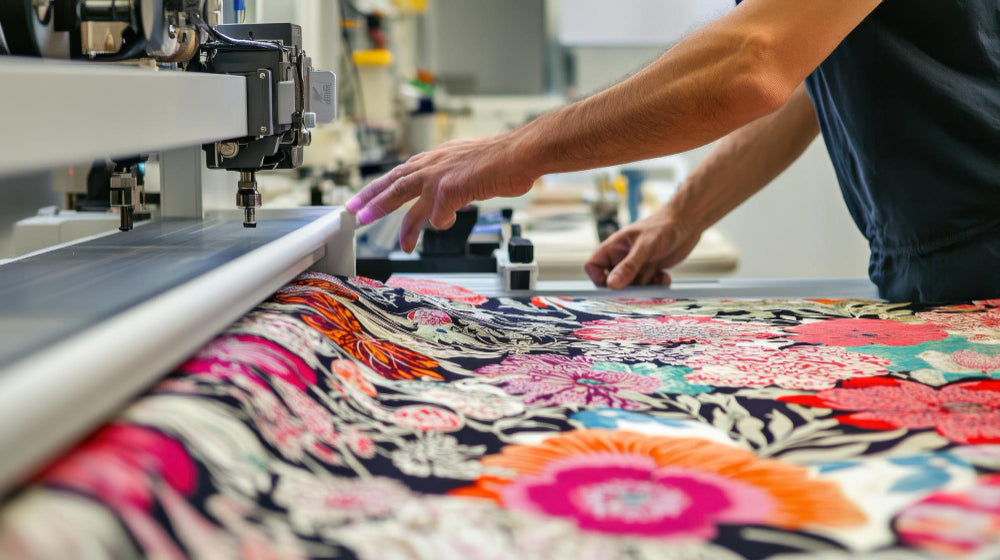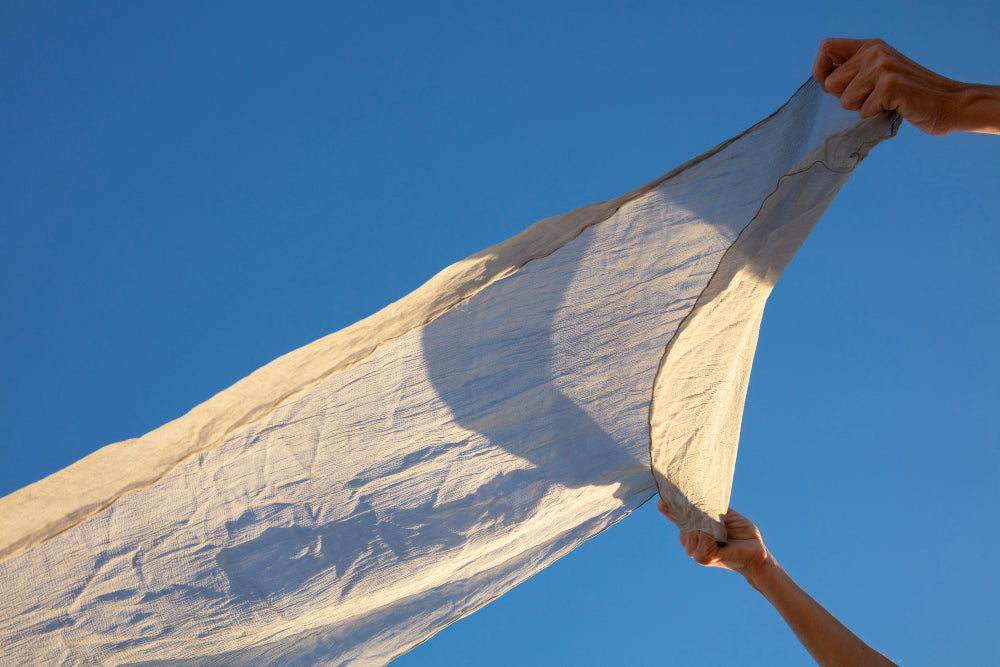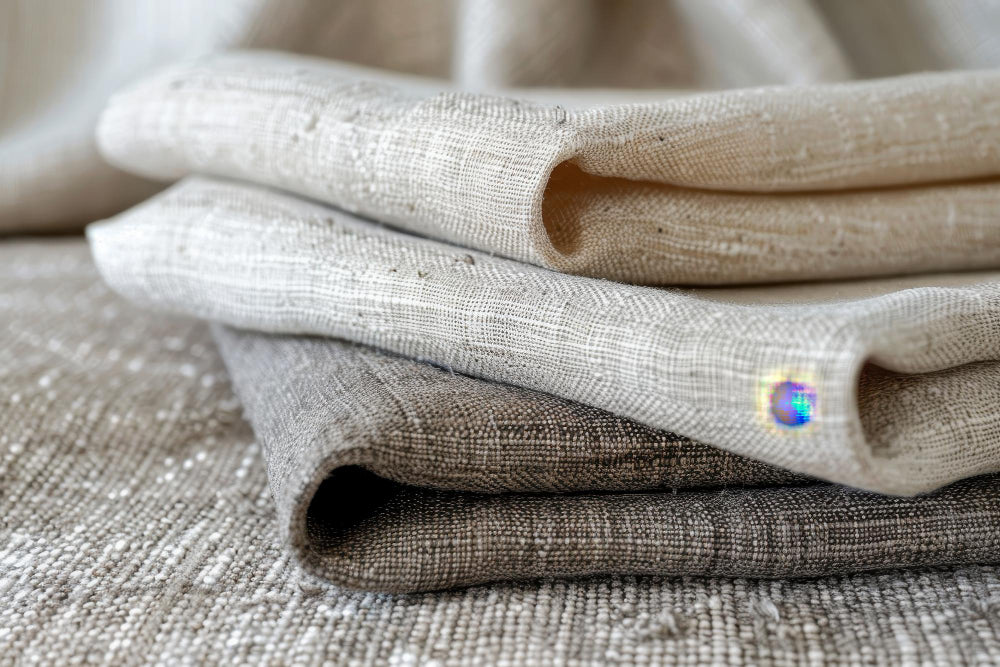Every designer starts with a concept and that idea needs fabric that supports it fully. If the colors feel off or the print does not align with the silhouette, the design loses strength. When you work with ready-made prints, you often adjust your plan to fit the fabric. That changes your result.
Custom fabric printing services keep the design in your hands. You pick the fabric type and apply your artwork. You adjust the print scale to suit your needs. This gives you the power to match your vision from start to finish.
These services offer support in practical ways:
- You can upload your own repeat pattern or artwork
- You choose the fabric that pairs well with your garment structure
- You test details like placement and color before bulk production
- You reduce material waste by starting with small quantities
- You build your full line on one clear visual story
When your print matches your idea, your product speaks clearly. Each piece in the line supports the next. That unity builds your brand.
Next, we look at how custom printing helps you shape the full collection, not just a single item.
How Custom Fabric Printing Services Help Build a Stronger Collection

A good collection is more than separate designs and it works as one system. The pieces relate to each other. The fabrics share mood and message. When you print your own fabric, this becomes easier to manage. You are not tied to what the market offers. You are able to guide every visual choice.
You control timing. You test prints in short runs and scale up only after review. This avoids delays and lowers your risk. The same print can appear across multiple silhouettes or be adjusted slightly to suit each shape.
This approach helps small brands as well. You can stay close to your audience and release work faster. The design and the fabric evolve together.
Ways custom fabric printing strengthens your product range:
- You link pieces with shared artwork or palette
- You fine-tune visuals across styles and seasons
- You print in small batches and adjust as needed
- You avoid last-minute fabric changes that break unity
- You offer custom variations without overstock
Each decision adds value. With control over how your fabric looks and feels, your entire collection becomes clearer. Next, we explore what to expect from a platform that supports this process effectively.
Key Features Designers Should Expect from a Fabric Printing Platform

Choosing the right service takes more than finding one that prints fabric. You need a platform that works like a design partner. It should support your process from sample to delivery. Good platforms make technical steps feel smooth. Great ones help you solve problems before they grow.
Your designs depend on detail. That means your platform must handle quality, speed and clarity. A missed file update or color mismatch can throw off your whole plan. Look for services that explain their process clearly and share fabric specs before printing begins.
Key traits in a reliable printing platform:
- Clear fabric and color profiles before you place an order
- Low minimum quantity so you can test before scaling
- Support with repeat, placement and layout correction
- Digital preview to approve before printing
- Responsive help team that understands design goals
These features allow you to stay focused on design. When the platform handles the technical side well, your print moves from idea to fabric without friction.
The next section will introduce specific platforms that meet these needs and support designers at all levels.
Digital vs Screen Printing: Choosing the Right Technique for Your Project
Before you print, you must choose a method. That decision shapes how your design appears on fabric. Each technique comes with limits and strengths. You should match your fabric, design detail and production needs to the right one.
Digital printing uses inkjet-style heads to apply color directly. It supports full-color images, fine lines and low-volume orders. Screen printing uses stencils to press ink through mesh. It gives solid color and works well for bulk runs. Other methods like rotary and block printing offer specific benefits but may require longer setup time or special tools.
Compare main methods here:
- Digital printing: best for high detail, small runs, rich gradients
- Screen printing: works well for bold shapes, spot color, large orders
- Block printing: slow but unique, suited to artisan or heritage work
Ask your platform how each option behaves on the fabrics you want to use. Print testing on swatches can reveal which path gives your design the result you need.
In the next section, we explore which services provide these options and support designers from sample to scale.
Best Platforms for Custom Fabric Printing Services for Designers

Designers rely on platforms that go beyond printing. These services must handle detail, meet deadlines and adjust to changing needs. A few have proven to support that work across product types and order sizes.
Fabriclore
Fabriclore leads for custom fabric printing in India. It works with labels of all sizes. The team supports everything from file setup to delivery. You can print on TENCEL, Modal, Bemberg or Organic Cotton. You get low MOQ, full transparency and doorstep support.
Main features Fabriclore offers:
- Catalog of thousands of ready prints plus support for your own artwork
- Life-like model visualisation to reduce sampling time
- Transparent quality checks across the sourcing and printing process
- AZO-free dyes and certifications like GOTS, FSC, BCI on request
- Support from concept to delivery with 21–45 days' timelines depending on season
Spoonflower
Spoonflower allows you to upload your pattern and print on demand. It fits those who want control over their art and prefer small runs.
Printful
Printful works well for fashion and lifestyle stores. You can integrate it with your online shop and print full-panel or all-over designs.
Art Fabrics
Art Fabrics supports advanced repeat options and helps with layout changes. It suits designers who want help prepping large-scale orders.
Each one offers something useful. Your needs will guide which platform fits. In the next section, you will see how Fabriclore helps brands meet tight timelines without losing design clarity.
Why Fabriclore is a Reliable Printing Partner for Fashion Businesses
Fabriclore helps designers meet deadlines without sacrificing detail. Its process fits both early-stage brands and experienced labels. From low MOQs to full file assistance, each step is clear and timely.
The company gives you real design control. You choose the fabric and adjust the scale. You view the layout before printing starts. That level of support makes the process easier and lowers the risk of rework.
Why brands trust Fabriclore:
- Thousands of curated designs to start from or build upon
- Preview your custom print on life-like models
- MOQ starts at 100 meters for digital and goes up to 500 for screen prints
- Support with solid dyeing, digital, screen and block print options
- Support with certifications and tagging for cellulosic blends
When designers use Fabriclore, they get fabric that matches their brief and arrives ready to stitch. Next, we explore the issues designers face when printing online and how to solve them early.
Common Challenges in Online Fabric Printing and How to Avoid Them

Custom fabric printing offers control, but small issues can still impact the final output. Designers often face setbacks when files are unclear or previews get skipped. Most problems start early and grow during production if not caught.
Color shifts are one of the most common risks. A design that looks bright on screen may print dull or uneven. This happens when screens and printers do not use the same color profile. Another issue is low-resolution files. These lead to blurred edges and soft lines, which break the visual sharpness of your pattern. Repeat mismatches also occur when artwork edges do not align properly during printing.
To reduce these problems, take early steps:
- Use the color profile recommended by the platform
- Share files in the format they request, usually TIFF or vector
- Keep resolution above 300 DPI for final size
- Ask for a strike-off or swatch before full run
- Use templates or guides for repeat and placement
- Double check file size and layout before upload
Good platforms will support these checks. They help flag issues early. Still, it helps if you keep your files well labeled and consistent. That speeds up review and avoids delays.
As you plan your next run, think through each file before you send it. A few extra minutes at the start can save weeks later. Next, we guide you on choosing the right platform based on your design scale and production stage.
How to Select the Right Platform Based on Design Goals and Business Size
Each platform serves different needs. If you choose based on surface features alone, you may miss what helps your work grow. A platform should match how you design, not only what you print. The right fit depends on how often you release collections, how much control you want and how your team works.
If your label is small, start with a platform that offers low MOQ and quick feedback. You can test designs, shift direction and learn from each run. If your business runs regular releases at scale, then look for structured print services that support bulk planning and help you maintain style consistency across seasons.
Some factors to guide your choice:
- For sampling and fast launches, choose digital-first platforms with low MOQ
- For production-ready designs, pick services that allow bulk runs with layout support
- For visual consistency, check whether swatches and test prints are available
- For high-detail work, prioritize resolution control and color management
- For brands that scale quickly, look for file storage, reorder tracking and design history
Select a platform that grows with you. Build a base on quick sampling. Then shift to bulk when your range is ready. Stay in control by keeping files organized, previewing before print and communicating clearly with the support team.
When your platform meets your goals, your production stays aligned with your pace. Up next, we close with tips to help you get the most value from the platform you choose.
Final Thoughts on Choosing a Custom Fabric Printing Platform
Custom fabric printing gives your ideas shape. But it also demands clear steps. Each print becomes part of your line, so each decision carries weight. The right platform supports your process without slowing it.
If you are new to custom printing, begin with small runs. Use those first orders to study how your artwork behaves on fabric and ask for swatches. Review how color and detail hold up after washing. Check how the layout fits different cuts.
Work with platforms that respond clearly and treat your files with care. The more open the process, the more trust you can build. This helps you plan better for the next collection.
To stay in control:
- Start with one design and test the outcome
- Ask for file support if needed before finalizing
- Keep all visuals and order notes labeled and stored
- Use the same platform across seasons for design consistency
- Build a connection with the team so support becomes faster
Designers grow when production keeps pace with creativity. A good print partner lets you move from concept to product without guesswork. Choose with care. Let your fabric speak clearly, from first stitch to final sale.
FAQs
Can you get fabric printed with your own design?
Yes. You can print your own design on fabric through platforms that offer custom fabric printing services. Most services allow you to upload artwork in a supported format, choose your fabric and preview the layout before printing. This helps you match the exact look and feel of your collection.
Which software is used in textile printing?
Professionals often use Adobe Illustrator and Photoshop for creating print-ready files. These tools support high-resolution designs, seamless repeats and proper color management. For layout and repeats, some also use CorelDRAW, Procreate or CAD software made for textile design.
How do professionals print on fabric?
Professionals use methods like digital printing, screen printing, rotary printing or block printing. The choice depends on volume, fabric type and design detail. Digital printing offers fine detail and low minimums. Screen printing works best for bold graphics in larger runs.
How to do digital printing on fabric?
To print digitally, start with a high-resolution design file. Upload it to a fabric printing platform that supports digital methods. Choose your fabric base, adjust the scale or repeat and request a sample. Once approved, the design is printed using inkjet technology directly onto the fabric surface.
